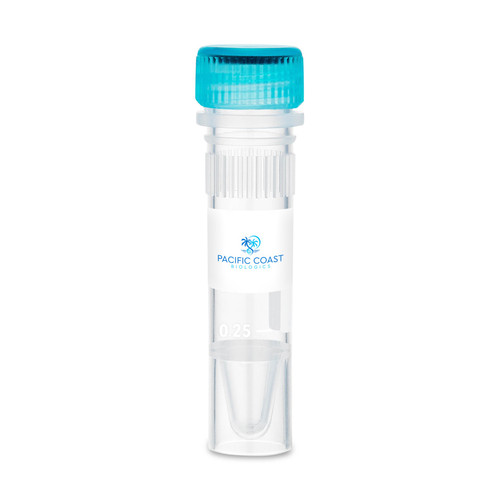The IGFs are polypeptide growth factors with mitogenic properties, stimulating cell proliferation and survival in various tissues like muscle, bone, and cartilage when studied in vitro. Although primarily produced in the liver, different tissues produce IGFs at specific times. Belonging to the Insulin gene family, which also includes insulin and relaxin, IGFs share structural and functional similarities with insulin but possess significantly stronger growth-promoting abilities. The expression of IGF-II is influenced by placenta lactogen, while IGF-I expression is regulated by growth hormone.
Both IGF-I and IGF-II signal through the tyrosine kinase type I receptor (IGF-IR), yet IGF-II can also utilize the IGF-II/Mannose-6-phosphate receptor for signaling. Mature IGFs are formed through proteolytic processing of inactive precursor proteins that contain N-terminal and C-terminal propeptide regions. Recombinant Human IGF-I and IGF-II are globular proteins composed of 70 and 67 amino acids, respectively, with three intra-molecular disulfide bonds. The estimated molecular weight of Recombinant Human IGF-I is 7.6 kDa.
| Product Specifications | |
| Species | Human |
| Published Species | Human, Mouse, Rat, Salamander |
| Expression System | E.coli |
| Amino Acid Sequence | GPETLCGAEL VDALQFVCGD RGFYFNKPTG YGSSSRRAPQ TGIVDECCFR SCDLRRLEMY CAPLKPAKSA |
| Molecular Weight | 7.6 kDa |
| Class | Recombinant |
| Type | Protein |
| Purity | ≥ 98% by SDS-PAGE gel and HPLC analyses. |
| Endotoxin Concentration | <1 EU/µg |
| Activity | The ED50 was determined through a cell proliferation assay using FDC-P1 cells, and was found to be between 2.1 and 3.2 ng/ml. |
| Conjugate | Unconjugated |
| Form | Lyophilized |
| Contains | No Preservative |
| Storage | -20°C |
CAUTION
For Research Use Only. Not for use in diagnostic procedures.














